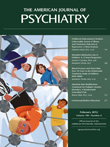In
Homelessness, Housing, and Mental Illness, sociologist Russell Schutt has written what must surely be the most thorough multimethod study yet to appear of efforts to help homeless people with serious mental illness reenter mainstream community living. The book is based on an 18-month randomized trial of two approaches conducted in the early 1990s by principal investigator Stephen Goldfinger, M.D., and a multidisciplinary team that included Schutt. The trial was modest in size, with just under 60 patients in each of two groups. All participants were guaranteed a housing subsidy that would support their exit from homelessness and give them a chance to move out of emergency shelter. One-half were assigned to live in independent living apartments. The other half moved to innovative evolving consumer households, in which a trained facilitator was instructed to guide on-site staff in promoting a sense of empowerment that would help residents create cohesive, mutually supportive communities that would eventually become self-sustaining without staff support after project funding ended. The bottom line of the experiment—as understood by this reviewer from the book and related publications—is that by traditional intention-to-treat analysis, there were few, if any, group differences, although the evolving consumer household group had fewer days of homelessness and substantially higher costs during the 18-month intervention (
1,
2), while the independent living group had more days of independent housing after the intervention ended.
However, Schutt takes his presentation far beyond traditional experimental analysis and offers his readers extensive subanalyses that address patient housing preferences and the ways in which such preferences change over time, along with provider judgments about what kind of housing would be “best” for each client, and the interaction between client and provider perspectives. He examines differential subgroup outcomes, reporting that both minorities and those with addictive disorders tended to have poor outcomes but that these disadvantages seemed to be attenuated in the evolving consumer household model. Schutt is so imaginative in his intricate and numerous subgroup and subscale analyses that he seems to forget the hazard of multiple comparisons in the analysis of experimental data. He finds, for example, that individuals who did not abuse substances showed specific benefits in the evolving consumer household model in the area of executive neurocognitive functioning, contrasted with several other neurocognitive dimensions that showed no differences; however, he concludes, too generally in my reading, that the evolving consumer household model distinctively benefits executive functioning (p. 266). Schutt is a sophisticated methodologist and tucks his rationale for this approach in an appendix (pp. 293–295), perhaps to keep the narrative moving forward. The range of analyses presented is exceptional and highlights the difference between definitive hypothesis testing and creative descriptive analysis.
Beyond the nuanced quantitative analyses, Schutt offers sophisticated theoretical perspectives and detailed qualitative observations. The research team clearly had high hopes for the evolving consumer household model, and Schutt places it in the context of sociological thinking about the difference between traditional communities, rooted in face-to-face personal attachments, and modern civilization, with its foundations in rationalized relationships. He rightly places the evolving consumer household concept in the tradition of utopian thinking about supportive communities in a world of cold impersonality. It is a mark of his honesty that he acknowledges that the evolving consumer household attempt failed to achieve its utopian objectives in this case.
Schutt demonstrates his commitment to rigorous multimethod investigation, once again, when he presents extensive qualitative data obtained through anthropological field methods. Numerous vignettes highlight the successes, paradoxes, and disappointments of the evolving consumer household endeavor. On the one hand, some clients value the supportive social environment, while others find it oppressive and intrusive. And although the investigators are deeply committed to principles of consumer choice, front-line staff find that this undermines their professional roles, and it is only when active substance users are forced to leave the evolving consumer household that these communities achieve their desired unity. These often painful descriptions of the experiential texture of the programs ring true, even as they complicate the empirical findings. One wishes that there were similar qualitative descriptions of the clients in the independent living condition.
It is hard to extract a simple conclusion from this demanding gold mine of objective data and lived experience. In the end, we are left with a humble sense of how much more difficult it is to reintegrate homeless people with mental illness into social communities than it is to put roofs over their heads. We should not minimize the importance of the latter goal to a just society, but we should likewise not minimize the incompleteness of this goal and the challenge of going beyond it.

